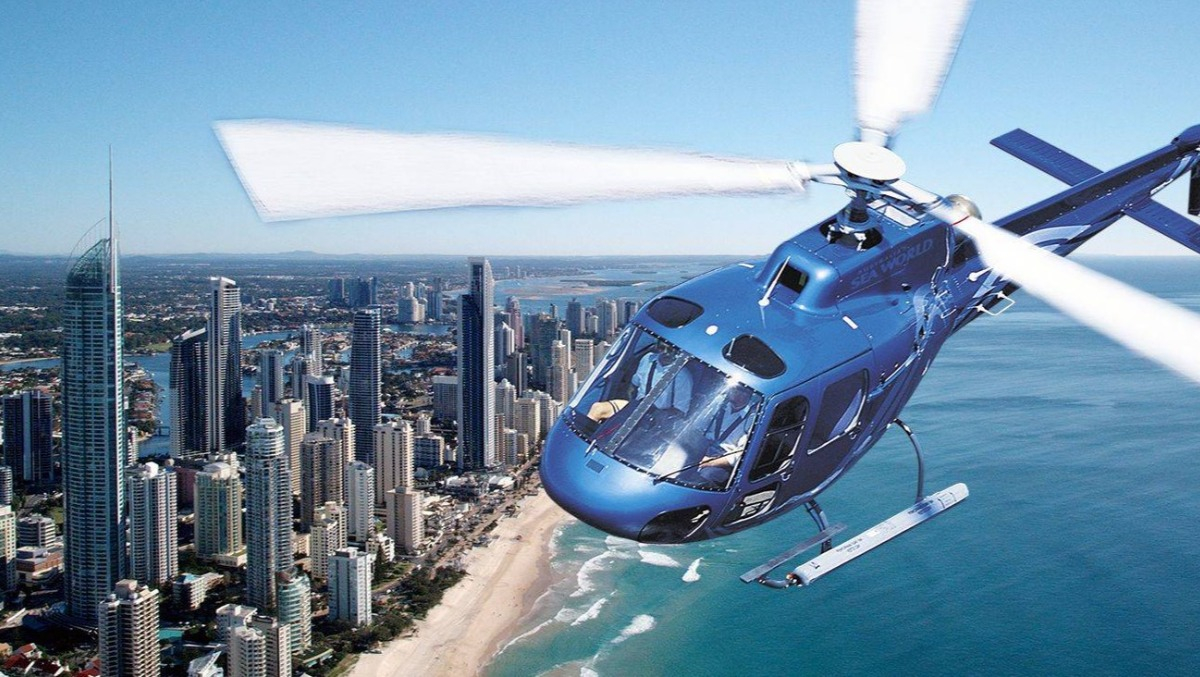The pilot of the helicopter that survived January’s Gold Coast crash has told investigators he did not see the other aircraft taking off.
A preliminary report compiled by the ATSB also details how he “did not recall” hearing a radio call from the second helicopter outlining that he was due to take off.
“This does not necessarily mean that a taxi call was not made, and the ATSB investigation will undertake a detailed analysis of the nature of the radio calls made,” said the organisation’s chief commissioner Angus Mitchell.
The incident saw two Sea World Eurocopter EC130s collide mid-air on Main Beach – minutes away from Surfers Paradise – on 2 January.
The pilot and three passengers onboard the helicopter taking off died, while three others were seriously injured. The second helicopter, approaching to land, miraculously landed with all six on board surviving.
“The ATSB has released this preliminary report to detail the circumstances of this tragic accident as we currently understand them, but it is important to stress that we are yet to make findings,” said Mitchell.
“Our findings as to the contributing factors to this accident, and the analysis to support those findings, will be detailed in a final report to be released at the conclusion of our investigation.”
Mitchell said the preliminary report details factual information, including the accident’s sequence of events.
“The factual information detailed in this report is derived from interviews with survivors of the accident, including the surviving pilot and passengers, and witnesses; analysis of video footage and images taken by passengers on board both helicopters, onlookers on the ground, and CCTV from nearby buildings; examination of the wreckage of both helicopters; and a review of recorded radio calls and aircraft tracking and radar data.”
The preliminary report details that the helicopters were operating from two separate helipad facilities about 220 metres apart, a pad within the theme park, and a pad to the south at the operator’s own heliport, adjacent to the park.
The 5-minute scenic flights were to follow the same counter-clockwise orbit, with the inbound helicopter, registration VH-XH9 (XH9) on approach to land at the heliport to the south and the outbound helicopter, registration VH-XKQ (XKQ) having departed the pad to the north from within the theme park.
The two helicopters collided at an altitude of about 130 feet, 23 seconds into the departing XKQ’s flight.
The main rotor blades of helicopter XKQ entered the forward cabin of XH9. XKQ broke apart in mid-air and impacted shallow water next to a sandbar. The pilot and three passengers were fatally injured, and three passengers were seriously injured. The helicopter was destroyed.
Helicopter XH9 sustained significant damage to the forward cabin, instrument console, and main rotor blades. The impact turned XH9 to the left, and the pilot continued with the momentum of that movement, completing a 270° descending turn to land on the sandbar below them near to XKQ. The pilot and two passengers were seriously injured, and 3 other passengers had minor injuries.
The helicopters were operating in non-controlled airspace where pilots use a common traffic advisory frequency (CTAF) to make radio calls to announce their position and intentions, and, as required, to arrange separation with other aircraft.
The report details the radio calls made by the pilot of the returning helicopter XH9, and that as they tracked south over the Broadwater, that the pilot saw passengers boarding XKQ as it was preparing to depart.
The pilot of XH9 recalled that their assessment was that XKQ would pass behind them, and that they did not recall the pilot of XKQ making a standard “taxiing” call announcing their intention to depart. The report also details that the pilot of XH9 did not see XKQ depart from the park helipad.
While video footage taken by passengers in both helicopters on mobile phones contained images of the other helicopter, this does not mean that the other helicopter was visible to either pilot.
“The investigation will look closely at the issues both pilots faced in seeing the other helicopter,” Mitchell said.
“We have already generated a 3D model of the view from the pilot’s seat from an exemplar EC130 helicopter which we will use as part of a detailed visibility study to help the investigation determine the impediments both pilots faced in sighting the other helicopter.”
Mitchell said the investigation would also look more broadly beyond the issues of radio calls and visibility.
“The ATSB will also consider the operator’s procedures and practices for operating scenic flights in the Sea World area and the process for implementing the recently-acquired EC130 helicopters into operation, and will review the regulatory surveillance of the operator and similar operators.”
The investigation would also look at the use of traffic collision avoidance systems (TCAS). There was no requirement for the helicopters to be equipped with a collision avoidance system, and while both accident helicopters were fitted with TCAS, those systems had not been fully integrated in the accident helicopters (as they had with the operator’s other helicopters), and according to the operator’s pilots were of limited benefit when operating near and on the helipads.
“This will be a complex and comprehensive investigation.
“However, if at any time during the course of the investigation the ATSB identifies a critical safety issue, we will immediately share that information with relevant parties so they can take appropriate safety action.”

















